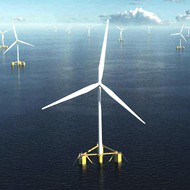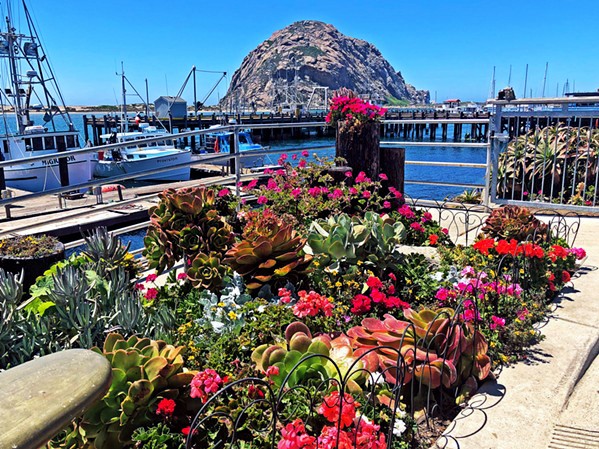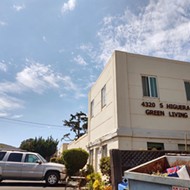A Morro Bay citizens group advocates for an initiative it claims could block construction of a battery storage facility
By Adrian Vincent Rosas[{
"name": "Newsletter Promo",
"id": "NewsletterPromo",
"class": "inlineCenter",
"insertPoint": "4",
"component": "15264767",
"requiredCountToDisplay": "0"
},{
"name": "Ad - Medium Rectangle CC01 - 300x250",
"id": "AdMediumRectangleCC01300x250",
"class": "inlineCenter",
"insertPoint": "8",
"component": "2963441",
"requiredCountToDisplay": "12"
},{
"name": "Ad - Medium Rectangle LC01 - 300x250",
"id": "AdMediumRectangleCC01300x250",
"class": "inlineCenter",
"insertPoint": "18",
"component": "2963441",
"requiredCountToDisplay": "22"
},{
"name": "Ad - Medium Rectangle LC09 - 300x250",
"id": "AdMediumRectangleLC09300x250",
"class": "inlineCenter",
"insertPoint": "28",
"component": "3252660",
"requiredCountToDisplay": "32"
}]
Barry Branin never fathomed that he would be an activist.
"Participants in Citizens for Estero Bay Preservation are from a broad spectrum of political parties in Morro Bay," Branin said in an email to New Times. "Seldom do you have communication from both sides of the aisle like this—working toward the same goal as we are."
The longtime Morro Bay resident said a spirit of cooperation has fueled the movement against constructing a battery storage facility where a former PG&E power plant lies dormant. As part of that movement, Citizens for Estero Bay Preservation put forward an initiative that it believes would require a public vote for certain kinds of development on the property. Branin and other group members have been collecting signatures since May and aim for the initiative to become law before Texas-based energy company Vistra begins construction on the 107-acre parcel.
As currently proposed, Vistra wants to build a 600-megawatt battery energy storage system constructed on 24 acres of the lot next to Embarcadero Street.
Citizens for Estero Bay Preservation members are confident that their measure has the proper number of signatures to qualify for the ballot as they await approval from Morro Bay City Clerk Dana Swanson.
"The committee members for Citizens for Estero Bay Preservation collected 1,486 signatures in support of our initiative," the group wrote in an emailed statement to New Times. "On Aug. 9, we presented initiative packets to the city clerk, and we are confident we have more than the required 815 verified signatures to move forward with the process."
Swanson said that the initiative has met the required raw count to officially be filed, but the signatures are still being verified using SLO County records. She has 30 days to complete that process. If the signatures are verified, they would be officially certified by the City Council at its next regular meeting.
"At that meeting, the council may order a report on the effects ... adopt the ordinance as presented ... or submit the initiative to the voters at the next regular election," she said. "The governing body may [also] call a special election for the purpose of submitting an initiative measure to the voters before the date of the regular election, provided that the election is held not less than 88 days nor more than 103 days after the order of the election."
According to the initiative, its intent is to amend the city's general plan to prohibit zoning changes in certain areas of the city for land designated as visitor-serving commercial or commercial-recreational fishing, unless it's approved by Morro Bay voters.
"[The area] is located east of Morro Rock ... and includes parcels situated on each side of Embarcadero Road as well as on Coleman Drive," an excerpt from the initiative reads. "[This] property includes restaurants ... Coleman Park, the Harbor Department, the U.S. Coast Guard ... Morro Dunes RV park, and approximately 63 acres of the former Morro Bay Power Plant property."
Because 63 acres of Vistra's 107-acre parcel are designated as visitor-serving/commercial-recreational fishing, Citizens for Estero Bay Preservation argues that if the initiative passes, it would require any sort of industrial development on the property to go to public vote before it gets approved. Therefore, the group believes that voters could potentially decide the fate of the battery storage facility project.
However, it's unclear whether the initiative would have the impact the group says that it will.
Morro Bay Mayor Carla Wixom did not comment on the issue and instead directed New Times to speak to Citizens for Estero Bay Preservation.
Initiative opponents cite California code they say makes the measure irrelevant in its attempt to block battery plant construction. In 2022, Gov. Gavin Newsom signed Assembly Bill 205 into law, creating an alternative approval process for projects related to renewable energy managed by the California Energy Commission. This bill allows projects like Vistra's to bypass the need for public approval, even if the site was designated under new zoning through the city's general plan and the California Coastal Commission.
Opponents also argue that the land formerly occupied by the power plant isn't even eligible for visitor-serving development. In July 2022, the California Department of Toxic Substances Control filed a restrictive agreement with the county that prevents the land from being used for any hotel- or motel-related development.
Regardless, Citizens for Estero Bay Preservation maintains its concern about the safety of building such a structure in a population-dense area.
"[We] believe battery energy storage systems have an important role in our world toward a carbon free-future," a statement on the group's website reads. "We do not believe placing a 600 [megawatt battery energy storage site] amid our nationally protected Estero Bay, an economic tourist hub, and near our high school is a good location."
New Times reached out to Vistra's Media Relations Manager Jenny Lyon for additional comment on the group's stance and initiative, and she responded with this statement:
"Vistra remains excited about the opportunity to partner with the city and local community on the redevelopment of the decommissioned Morro Bay Power Plant site and to help California advance its renewable energy goals," the statement said. "Further information on the specifics of the project will be shared during the public process."
Citizens for Estero Bay Preservation members are hopeful that the measure will pave the way for more public involvement in the city's planning and development process—and, according to Branin, there's precedent to look to for inspiration.
In 1972, the California Coastal Commission was established by a voter initiative that sought to protect coastal land from unregulated development, and the commission was later made permanent by the Legislature through the California Coastal Act of 1976.
"The California Coastal Commission was established by a citizens' initiative like ours," Branin said with a laugh. "So we feel very comfortable and confident in our actions in pushing this as a result of the history of these kinds of initiatives and their impact in California."
Branin said he's hopeful that Citizens for Estero Bay Preservation will catalyze residents to know they can make a difference because people in the state have done so in the past.
"This situation reflects that same spirit," he said. "It's what is driving us to seek the change that we want to see in a place we care so deeply about." Δ
Reach Staff Writer Adrian Vincent Rosas at [email protected]
Latest in News
Readers also liked…
-

SLO police identify alleged driver who hit and killed couple
Dec 22, 2022 -

When the levee breaks: Oceano residents, county officials walk a tightrope of regulations to manage Arroyo Grande Creek, which some say led to the levee's failure in January
May 18, 2023 -

Cal Poly report highlights offshore wind's potential to spur green energy transition
Jun 8, 2023










